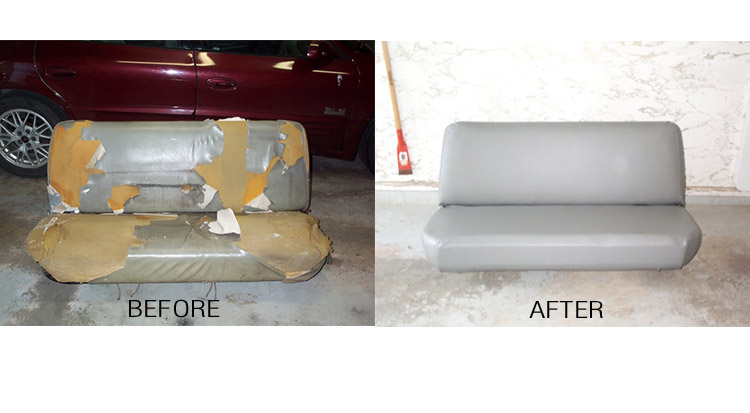Uncover Top Tips for Furniture Repair Projects
Embarking on an upholstery repair service project can be a challenging task for several, especially for those not familiar with the ins and outs of furnishings remediation. The journey of restoring broken or damaged upholstery requires a keen eye for detail, a steady hand, and a collection of beneficial suggestions and methods. As we explore the realm of furniture repair work, we will discover essential insights that can make a considerable difference in the result of your repair undertakings. From picking the appropriate fabric to mastering the art of reupholstering, each step holds its own set of difficulties and incentives. So, let's start this journey of untangling the leading ideas for furniture fixing tasks.
Selecting the Right Fabric

Important Devices for Furniture Repair Work
When undertaking furniture repair service projects, having the right devices is necessary for accomplishing successful results. One of the important devices for upholstery repair is an essential weapon. It's advised to use a durable staple weapon for furniture projects to make certain that the staples penetrate through the textile and into the frame safely.
An additional important tool for furniture fixing is a rubber club. A rubber mallet is helpful for gently tapping and protecting furniture products right into place without damaging the furniture frame. Furthermore, having a joint ripper is beneficial for thoroughly eliminating old stitches and joints without creating damages to the material. Last but not least, a tough set of needle-nose pliers is important for pulling out staples or tacks and for holding little products firmly throughout the upholstery repair work procedure. These tools are important for any type of upholstery repair task and can make the job less complicated and a lot more effective.
Fixing Openings and splits
Repairing rips and holes in furniture needs mindful interest to detail and accuracy to make sure a seamless repair that recovers the stability of the furniture item. When dealing with tears or openings, start by cleansing the damaged location to eliminate any debris. For tiny holes, think about making use of a spot that matches the upholstery product. Apply a tiny amount of material adhesive around the sides of the opening, carefully position the patch over it, and weigh down firmly. For bigger tears, YOURURL.com utilize a needle and thread to carefully sew the sides back with each other. Ensure the string color matches the upholstery for a very discreet repair work. Apply a little quantity of fabric adhesive to safeguard any loose sides as soon as the tear is sewn up. Enable the adhesive to completely dry completely before using the furnishings. Bear in mind that fixing tears and openings without delay can avoid additional damage and extend the life of your furniture.
Furniture Cleaning and Upkeep
To maintain the long life and appearance of upholstered furniture, routine cleaning and maintenance methods are essential following any necessary repairs to tears and holes. Upholstery cleaning should be approached with treatment, thinking about the kind of material and any type of certain cleansing directions supplied by the supplier. Vacuuming furniture frequently aids get rid of dust, dirt, and debris that can gather and wear down the material gradually. In the case of stains or spills, it is essential to resolve them quickly utilizing proper cleaning items or seeking professional assistance if needed to stop irreversible damage.
In enhancement to cleaning, correct maintenance of upholstery involves turning paddings frequently to make certain even wear and preserving a consistent level of convenience. Fluffing and reshaping cushions can assist preserve their shape and suppleness. Maintaining upholstered furnishings out of direct sunlight and far from warm resources can likewise avoid fading and damage to the fabric. By including these cleaning and maintenance techniques into your regimen, you can expand the life of your upholstered furniture and keep it looking its finest for years ahead.
Tips for Reupholstering Furnishings
Reupholstering furniture requires precise focus to detail and read the article a keen eye for workmanship to attain a refined and expert result. Before beginning the reupholstering process, meticulously assess the problem of the piece and determine if it is worth the moment and initiative. Select premium material that complements the furniture's design and consider the toughness of the material, specifically for often used pieces. When eliminating the old textile, take note of just how it was affixed and any type of extra padding or padding made use of. This will certainly serve as a guide when using the new upholstery. Guarantee to determine and cut the material precisely to stay clear of any kind of creases or bunching. Use suitable tools like a staple weapon, needles, and thread to protect the material tightly and nicely. Take note of the corners and sides to produce a tidy and expert This Site finish. Lastly, take your time and job systematically to achieve a reupholstered item that looks like new.
Conclusion
Finally, furniture repair jobs call for careful consideration of material selections, crucial devices, repair strategies for holes and splits, cleansing and upkeep techniques, and reupholstering ideas (upholstery repair). By following these top suggestions, individuals can effectively preserve the high quality and bring back of their furniture. It is necessary to approach upholstery fixing jobs with the appropriate expertise and devices to make sure an effective outcome
